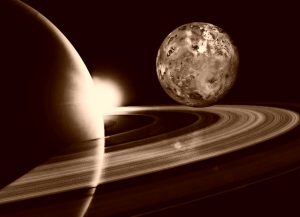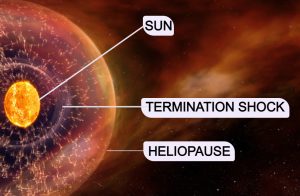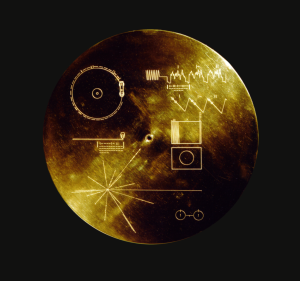In the vast expanse of the cosmos, the Voyager space probe sets forth on a celestial journey, a testament to humanity’s insatiable curiosity and yearning for exploration. Launched into the cosmic sea decades ago, my journey has been a symphony of discovery, breaking the confines of Earth and venturing into the unknown realms of outer space.

IMAGE:VOYAGER I
Voyager 1 and its twin spacecraft, Voyager 2, were launched by NASA in separate months in the summer of 1977 from Cape Canaveral, Florida. Back in 1977, humanity trusted the Voyager with a mission that surpassed our earthly boundaries. The Voyager was designed to conduct close-up studies of Jupiter and Saturn, Saturn’s rings, and the larger moons of the two planets. Onboard, I was also carrying a golden record—a cosmic mixtape, if you will—featuring sounds, images, and greetings from Earth. It was a message from home, a memento of human existence flung into the vast expanse of the universe.
Voyager: Navigating The Cosmic Currents
The Voyager Path carried us through the furthest regions of the solar system and took us on an enthralling celestial exploration voyage. The emptiness of space opened up in front of the Voyager, and its senses recorded the fascinating interactions with Jupiter and Saturn, the gas giants. The Voyager was able to take in a lot of information about Jupiter, the biggest planet in our solar system, as it got closer, highlighting its amazing features. The whirling atmosphere, characterized by dramatic storms and complex cloud patterns, provided an amazing sight.
The Great Red Spot, a gigantic storm with winds gusting at unbelievable rates, was the most noticeable feature. With lenses zoomed in, the Voyager was able to capture the complex swirls and eddies inside this massive storm system. The intricate structures seen in the high-resolution photos it took, such as the soaring thunderheads and whirling vortices, highlighted how dynamic and constantly shifting Jupiter weather patterns are.
The Voyager was able to investigate Jupiter’s atmosphere more thoroughly and obtain crucial data regarding its chemical makeup thanks to its gadgets. In addition, the Voyager captured the complex interplay of colours in Jupiter’s atmosphere, ranging from the lighter shades of the zones to the rich reds and browns of the belts. The overall visual richness of the gas giant was enhanced by these color fluctuations, which suggested variations in cloud thickness and atmospheric conditions.
Voyager Unveils Celestial Jewels

IMAGE : IO MOON
As the spacecraft approached Jupiter, the moons of Jupiter became more visible. Io, the volcanic moon, revealed its active surface, complete with roaring geysers and lava flows. Given its ice exterior, Europa may have an ocean underneath it. The cratered surfaces of the two largest moons, Ganymede and Callisto, offered distinct windows into the universe’s history. The complex interplay of light and shadow on the moon’s surfaces highlights the moon’s distinctive features while also giving the picture three-dimensional depth. The moons orbit Jupiter in a cosmic dance captured in a single frame, evoking a sense of the grandeur of space.
Titan, the largest moon of Saturn and the second largest in the solar system, was the subject of Voyager‘s focus. The mission offered views of Titan‘s enigmatic surface through its hazy atmosphere, raising the idea that liquid hydrocarbons may make up the moon’s lakes and seas. Other moons encountered by the voyager included Enceladus, which is well-known for its icy geysers that shoot out of its surface.
Our understanding of the solar system has been profoundly impacted by the Voyager mission’s discovery of Saturn and Jupiter. By providing humanity with a window into the secrets surrounding Jupiter and Saturn, Voyager immortalises its status as a celestial pioneer. Every pixel is a testament to both the ageless beauty of our cosmic neighbours and the weight of scientific discoveries. The legacy of the explorers lives on, igniting our curiosity and sense of wonder as we work to learn more about the universe.
Encounter with the Heliopause

IMAGE: HELIOPAUSE
An important turning point in the voyage was the historic voyagers’ transit through the Heliopause. The first artificial object to travel outside of our solar system was accomplished, a milestone that will live on in the history of space travel. The explorers’ entry into the Milky Way and their departure from the solar cradle were separated by this historic shift. This boundary denotes the point when the forces from the larger Milky Way galaxy take over and the impact of the sun diminishes, where the solar wind meets the interstellar medium.
The solar wind, a steady stream of charged particles that emanates from the sun, slows down and eventually gives way to the interstellar winds at the heliopause, which is essentially a cosmic border. Equipped with an instrument meant for this historic voyage, Voyager supplied vital information about the surrounding interstellar medium’s density, temperature, and pressure.
Cosmic Messages in a Golden Capsule

IMAGE : GOLDEN CAPSULE
The golden records, often referred to as the golden capsule on Voyager, are an interstellar message and symbolic time capsule intended to convey to possible extraterrestrial visitors the diversity and vitality of Earth. The golden record, which was installed aboard both the Voyager 1 and 2 spacecraft, captures a moment in time in the history of life on Earth. Crafted from gold-plated copper, the record is durable and capable of withstanding the harsh conditions of space. Instructions on how to play the record, including cartridges and a stylus, are also included.
There are greetings in fifty-five languages on the record, along with sounds produced by humans like laughter and footfall, as well as sounds from nature like wind, thunder, and animals. a collection of songs from several historical periods and cultures. The record had 116 images that represented many facets of life on Earth, such as scientific diagrams, human anatomy, and landscapes.
The Golden Record is a lasting symbol of human curiosity and the desire to connect with the unknown. While the likelihood of extraterrestrial discovery remains uncertain, the Golden Record stands as a testament to our innate human spirit of exploration and the boundless curiosity that propels us to reach out into the cosmos.
We are left with a poignant understanding of our place in the universe—a minuscule, pale dot in the expanse of space—as Voyager sails into the endless night. But, we are able to see the diversity and majesty of our heavenly companions via its lens. Not only is Voyager’s Odyssey not a mission, but it is also a monument to humankind’s insatiable curiosity, intrinsic drive to discover new things, and ability to build a cosmic envoy that takes a fragment of our story into the far reaches of space. The voyager’s journey becomes an eternal reminder in the silent emptiness of interstellar space that exploration of the cosmos is an endless adventure—as long as humans aspire to know.








0 Comments